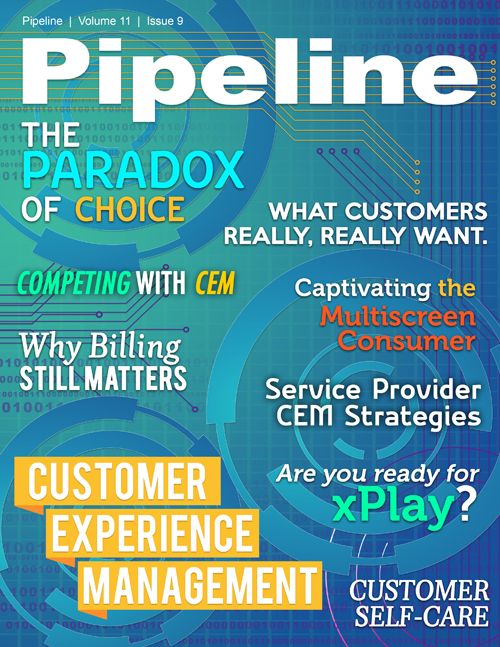xPlay: Connecting the Digital Lifestyle
For example, imagine bundling a multi-vendor connected home and connected car experience with video content that can be delivered on any device (including a refrigerator) at any time, which draws from multiple content networks. This package is truly xPlay, and while it requires connectivity and includes communication, it also requires many additional enablers. Pricing in such an environment must be completely re-tooled, and metrics like average revenue per user (ARPU) should be retired for new metrics that better reflect value and engagement.
There are significant BSS implications at play, too. The cloud generation expects to purchase any service, anywhere, at any time, in any billing configuration, over any device. This requires a dynamic product catalog that is network aware, service aware, and subscriber aware. Moving further up the stack, it also requires intelligent billing.
“Service providers in both emerging and mature markets are compelled to evolve their service offerings toward business models that stress new revenues from advanced digital services,” said Denis Bernaert, senior vice president and managing director of the BSS business unit at Comverse. “By shifting their business model with more intelligent billing to fully leverage advanced mobile broadband networks, service providers will be better positioned to compete in the new digital age."
Are you ready?
How ready are CSPs to become a enablers of digital lifestyle services, or even to DSPs? A recent survey conducted by CSG International reveals some interesting data:
- 65% of CSPs indicate they already have a plan in place to position themselves as a digital content destination, and 58% say execution is currently underway.
- 31% of telecommunications organizations and 44% of cable organizations said enabling content portability is their top strategy for becoming an enabler of digital lifestyle services. CSPs also want to leverage content portability to go beyond their relationships with primary account holders to reach more potential content-consuming customers within the rest of the household.
However, making that “content portability” strategy a reality is also a primary concern for CSPs. The majority cited consumer demand for content that is portable across accounts and devices, as a significant concern:
- 63% of operators cited enabling content portability, personalization, device authentication and offering access to content from a single account across multiple devices as their primary concern about their ability to drive profit from digital content; and
- 41% of telecommunications organizations cited the ability to quickly launch and support new products and/or business models to support them as a leading concern around the delivery of content services.
The importance of the gateway
In order to have a full perspective of a customer’s digital lifestyle and offer a compelling xPlay experience, service providers must be able to tap into all the connected devices used by a customer. In the multi-vendor IoT market, however, this is visibility is not native. A “digital services gateway” is required to link everything together and provide a consistent quality of experience (QoE). This is essentially an API exposure platform that integrates WebRTC functions and sits in-between a WebRTC client and the multitude of connected devices.





















